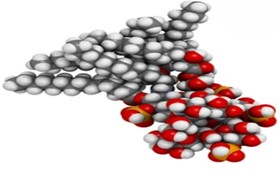Biospecimen Processing Protocol
GUIDELINE
- Specimens are processed according to the study design and the methods most appropriate for preserving the analytes of interest. For a particular specimen type and analysis, several processing methods may be appropriate.
- A major biorepository activity that is amenable to automation is aliquoting. DNA in solution, as well as for example serum and plasma, must be stored in volumes suitable for downstream laboratory analyses.
METHODS
Blood
- The processing method used for blood specimens depends on the laboratory analyses to be performed, whole blood can be separated into fractions, such as plasma, serum, buffy coat, red blood cells.
- Whole blood may also be cryopreserved as an efficient and cost-effective approach to centralized processing and storage of viable cells in large- scale epidemiological studies.
- Cryopreservation is a cost-effective way of preserving viable Iymphocytes for subsequent recovery of DNA, or for Epstein- Barr Virus (EBV) transformation to create Iymphoblastoid cell lines as a source of unlimited amounts of DNA.
Tissue
- Specimens resected specifically for research may be either processed in the operating room or pathology suite, shortly after the time of collection, or may be transported to the expository for processing, depending upon the requirements of the specific protocol.

Urine
- Processing of urine before storage is fairly straightforward. The primary decision is the size of the aliquots to be stored and is based on the expected analyses.
- If the analytes are stable to thaw / refreeze cycles then larger aliquots can be stored.
Saliva / Buccal Cell from Mouthwash
- Buccal cells collected using the mouthwash protocol are processed by centrifugation of the cell suspension, resuspension in a buffer, and either processed immediately or frozen for future use.
- Usually, additional processing involves DNA extraction.
Aliquoting
- Dividing specimens into smaller sample aliquots is usually necessary to preserve them in volumes useful for routine analyses.
- The aliquoting protocol should be designed only to store the number of aliquots necessary for the intended analyses, plus additional long-term archival samples that will be available for unforeseen uses.
- Although many analytes, such as steroid hormones are stable, other analyses may be affected by one or more thaw- freeze cycles.
NOTES
- Cryopreservation typically involves the use of a cryoprotectant, such as dimethyl sulfoxide (DMSO). However, commercial cryoprotectants that are less toxic have been developed.
- A special consideration in processing buccal cell DNA is the high percentage of bacterial DNA present in these specimens, which requires special quantitation by real- time PCR.
- In developing an aliquoting protocol, the consequences of repeated thawing and refreezing cycles should be considered.
RELATED PRODUCTS & SERVICES
Reference
- Vaught JB and Henderson MK. (2011). "Biological sample collection, processing, storage and information management." IARC Sci Publ. (163), 23-42.





